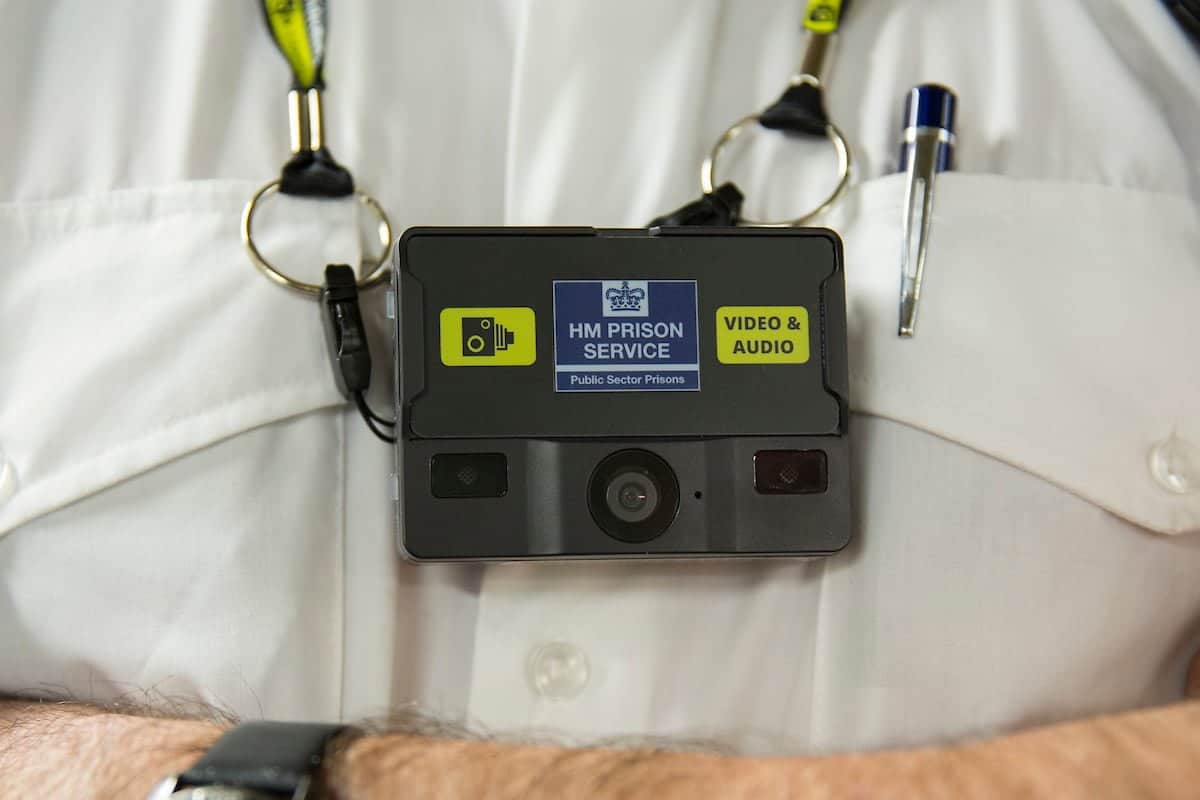Pilot findings
Last week, ironically on the same day that the European Committee for the Prevention of Torture published its allegations of English prison officers punching compliant prisoners as a form of “preventive strike”, the MoJ published its evaluation of the pilot of prison officers wearing body worn video cameras.
The background to this pilot is that in response to rising levels of prison violence, HMPPS commissioned the Violence Reduction Project, with the aim of reducing levels of assaults against staff and prisoners. Findings from international research suggest that use of cameras can lower rates of assaults in prisons, by increasing accountability and transparency, reducing staff reporting workloads, enhancing evidentiary capability and acting as a potential behaviour change mechanism. As such, HMPPS piloted the use of Body Worn Video Cameras (BWVCs) to investigate how their use might serve to keep staff and residents safe in the prisons of England and Wales.
Six hundred BWVCs were deployed to 23 establishments across the prison estate to pilot and evaluate their effect on prison violence. The pilot of BWVCs ran from June 2015 to December 2015. Survey data was gathered in June 2015 (pre pilot) and December 2015 (post pilot). Fieldwork for some aspects of the research continued until April 2016. Data used for the impact evaluation was gathered from December 2014 to February 2016. The research team evaluated the impact of BWVCs on assault and use of force rates, as well as their perceived impact on relationships, safety and fair treatment. The project also considered how BWVCs could be used in staff training and disciplinary proceedings. The project involved 2,800 responses from staff and 800 from prisoners through their contributions to interviews, surveys and action research.
Given that rates of violence in our prisons have soared over the last five years, it is disappointing that it has taken the MoJ so long to publish this evaluation.
The headline findings perhaps explain this delay:
- BWVCs had a varying impact on the levels of recorded violence and use of force across the pilot sites with some sites showing an increase and some a decrease in various types of assault rates. Overall, there was no statistically significant difference in assault rates between the pilot and comparator sites following the use of BWVCs.
- Staff and prisoners involved in the study were more positive and more likely to support the use of BWVCs when they had been well- informed about their purpose, and had seen or been involved with the use of BWVCs.
- BWVCs were reported to have both positive and negative impacts on relationships between staff and prison residents.
- In some cases, staff and prisoners reported benefits of BWVC use, such as a calming effect on prisoners and improving the management of poor behaviours. However, the reports of positive changes were not consistent across the pilot sites and were affected by practical issues such as limited access to the equipment and attitudinal barriers such as some staff members’ ambivalence or resistance to change.
I’ve always been an advocate of body-worn cameras for both police and prison officers because of the growing international evidence of their positive impact to the benefit of both the professionals using them and the people they are interfacing with.
The main benefits are:
- Professionals are aware of wearing the cameras and consequently tend to ensure that their behaviour is in line with professional standards.
- People being arrested or prisoners are aware of the cameras and therefore unlikely to temper any aggression.
- All parties are discouraged from making false representations against each other.
Interestingly, it has been found that audio recordings are particularly important as they tend to give a clear indication of the context and which party might be responsible for any aggression before the cameras start rolling.
My personal opinion is that it is in the interests of professionals to wear cameras in order both to reduce the number of potential conflicts and as an independent source to validate their standards of behaviour.
However, it is clear that the introduction of cameras needs to be handled in a very transparent and careful manner. The report found that several staff and prisoners expressed fear about the consequences of the use of BWVC (with mistrust and suspicions about others’ motives), some prisoners thinking that staff might purposefully manipulate use of BWVCs with the sole intention of punishing them, and some staff being fearful that their language and behaviour would be judged unfairly and that the camera footage would be used for disciplinary action against them.
The overall conclusion of the evaluation is:
If BWVCs are used transparently, consistently and fairly, this research indicates that they can: provide staff with a greater sense of physical protection; provide better evidence to assist with the adjudication process; effectively de-escalate and deter incidents (particularly less serious indiscipline and verbal disputes); improve relationships by encouraging open and respectful interactions; offer innovative opportunities for learning and development for staff and prisoners; and support the development of a rehabilitative environment by improving relationships, perceptions of fairness and trust and increasing transparency.
Thanks to Andy Aitchison for kind permission to use the images in this post. You can see Andy’s work here.








